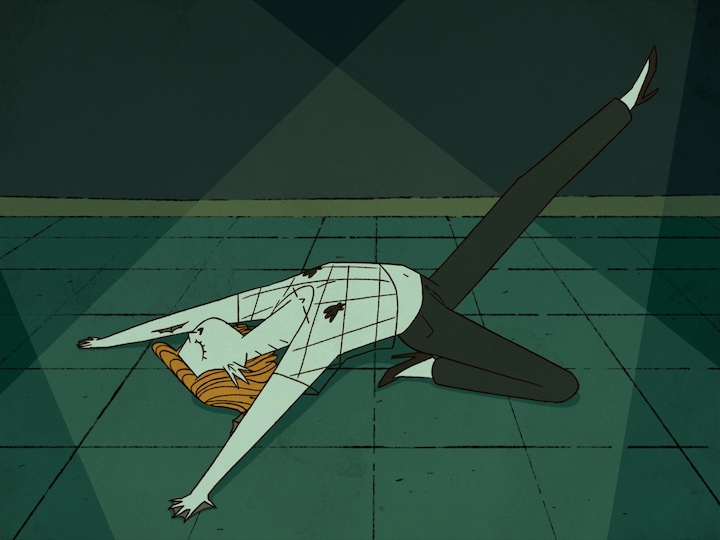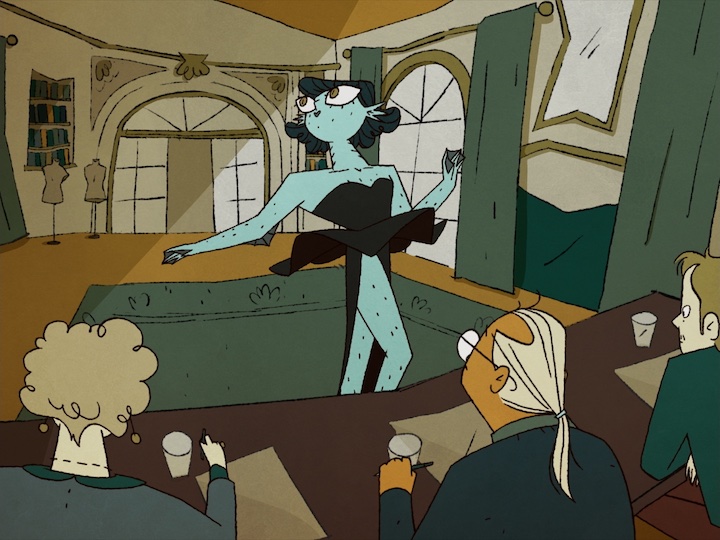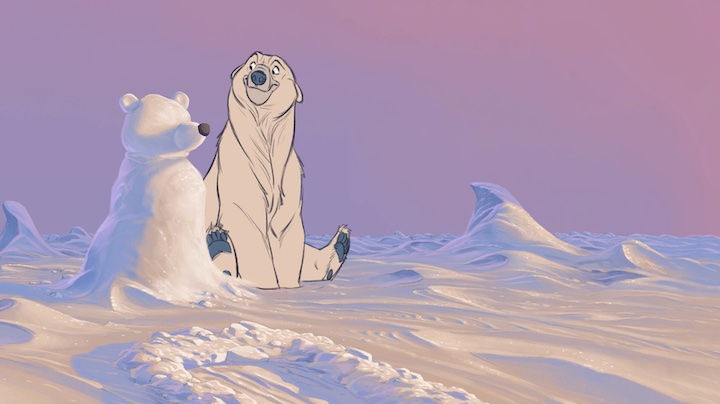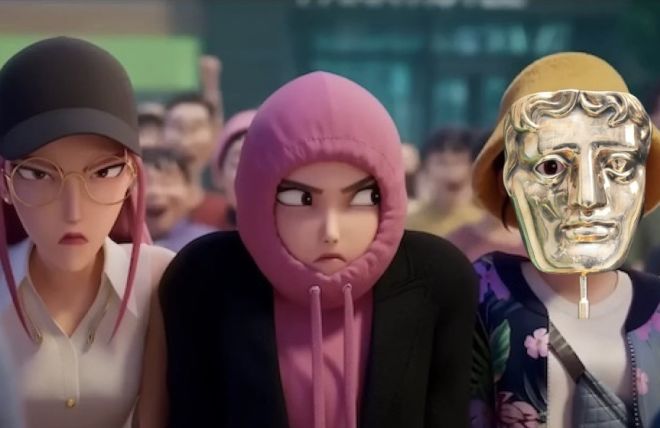A website dedicated to animation, awards, and everything in between.

Credit: Gigi (Cynthia Calvi)
Director Cynthia Calvi collaborated with XBO Films to make Gigi, the story of a real-life woman’s transition to become the truest version of herself. The titular Gigi also brought her perspective to the film, drawing a parallel to The Little Mermaid. Gigi won the Helen Hill Animated Short Jury Award at the New Orleans Film Festival, which qualified it for Oscar consideration at the 98th ceremony. Cartoon Contender spoke with Calvi about telling Gigi’s story, the film’s style, and how animation can be an ideal match for documentary storytelling.

Credit: Cynthia Calvi
Q: How did you first meet the titular Gigi, and when did you two decide to collaborate on his project?
A: I met Gigi in primary school. We were in the same class, and my best friend lived in her neighborhood, so we would often hang out together. We decided to work together in 2016, when I wanted to make my first animated documentary about a woman who inspires me. So it was only natural that I asked her to be the first person I interviewed.
Q: When many people think of documentaries, they usually think of live-action, archival footage. Of course, animated documentaries have existed as far back as Winsor McCay’s The Sinking of the Lusitania. When did you first realize that animation and documentary filmmaking can go hand in hand?
A: In my second year at animation school, there was an exercise where we had to adapt an audio documentary made by students from the neighboring documentary school. That’s when I made my first animated documentary. It was about a postman’s rounds in a rural area. I knew right away that I wanted to do it again.
Q: The titular Gigi is credited as the short’s co-writer. What was the writing process for the film like?
A: It was important for me to credit Gigi as co-writer because, first and foremost, it’s her story. She had already “written” it by living it. I also wanted to leave room for her to validate what I had understood of her feelings, to make sure I was capturing her testimony as accurately as possible. Throughout the writing process, I would regularly submit my progress to her so she could react and validate the narrative choices.
Q: How did XBO Films get involved in the project? Did you pitch it to them, or did they come to you?
A: I met Luc Camilli, a producer at XBO Films, at my graduation ceremony. He gave me his card and said that we had a lot in common, adding that he would like us to collaborate on projects in the future. So it was only natural that I turned to him to propose this animated documentary, especially since I had seen, at various festivals, that XBO Films already had a real editorial line around animated documentaries. I felt really supported straight away, because of all the experience he had got from making films that were like Gigi.
Q: The film has a distinct color palette that almost makes the audience feel as if they’re underwater, even when on land. How did you go about selecting the film’s colors?
A: I like working with a fairly limited color palette. It’s a creative constraint that I find stimulating, and it also allows me to create a real visual unity from one shot to the next. I like the main characters to be easy to identify because they each have a strong color that is unique to them. I had already tried this in my previous films. For Gigi, the color choices were made quite instinctively, but I remember looking for an atmosphere that was both elegant and aquatic. That’s what guided the golden tones, velvety greens, and cool shades found in the film.

Credit: Gigi (Cynthia Calvi)
Q: I love Gigi’s design in the short film, especially her expressive eyes. Did you have this design in mind from early on in production, or did it take a few concept sketches to get it right?
A: Gigi’s design is the result of a lot of research and drawing. But the big, expressive eyes came from a story she told me, which I ultimately didn’t include in the film. She said that she often compared her gaze to that of her twin brother, which she found dark and mysterious, while she saw her own as more round, more open, with something curious and ingenuous about it. This image struck me, and looking at our childhood photos, I found exactly that contrast between the two of them. It was this memory that inspired me to give Gigi those big, lively eyes.
Q: In recent years, more and more people in the trans community seem to be highlighting Disney’s The Little Mermaid as an eye-opening moment in their journeys of self-discovery. Did you notice these parallels before meeting Gigi?
A: I hadn’t noticed this before I met Gigi. But while writing the funding proposal and doing my preliminary research, I began to see that there was a real recurring theme around the figure of the mermaid. This reinforced my belief that this metaphor could resonate more broadly, and that my intuition was on the right track.
Q: Gigi has qualified for Oscar eligibility by winning the Helen Hill Animated Short Jury Award at the New Orleans Film Festival. It also won the Shorts Grand Jury Prize at the Animation is Film Festival. What are some standout memories from the festival circuit?
A: My best memories from the tour are the times when we met the audience. The conversations I have after the screenings are very powerful. People come up to talk to me, sometimes in person or by message, to tell me how the film relates to their own lives. I also loved the queer screenings presented by drag queens, in a really supportive and fun atmosphere. The audience reacted a lot, laughed, and cheered during the film. It was very warm, and this made me feel confident about presenting the film to people who were less informed about these issues. This mix of cinema, performance, lip-syncing, and make-up was truly magical.
Q: If you had the chance to make a feature-length animated documentary, what would you like the subject to be?
A: If I had the opportunity to make a feature-length animated documentary, I would probably keep focusing on strong female characters, people who inspire me a lot. That’s what moves me the most and what I feel I have the right to talk about. I think there’s nothing quite like drawing on real-life experiences, on extraordinary journeys that can make us feel and think about the world in a universal way. It’s these kinds of human interactions that make me want to create.
Nick Spake is the Author of Bright & Shiny: A History of Animation at Award Shows Volumes 1 and 2. Available Now!





